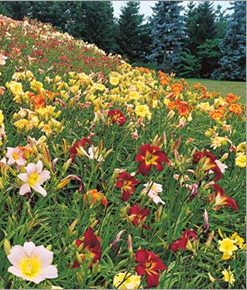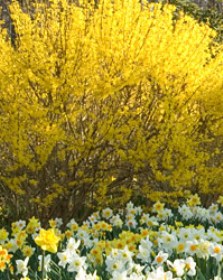|
|
|
Ideas For Designing Your Cottage Garden
 |
 |
 |
|
Anyone who has ever attempted to create a cottage garden has probably already discovered that the concept is somewhat hard to define in an exact and precise manner. While there are many elements that may be present in the majority of cottage gardens, as the term is more widely applied, it is also true that some ambiguity applies as to whether certain items and design characteristics are required as essential features. Needless to say, there is probably no universal definition or a true set of prescribed stipulations that must be adhered to in designing your own cottage garden. However, we can point you in the direction of at least one well-known horticulturist, Henry Flowers (appropriately named), who has defined a cottage garden as ... "a place for the cultivation of flowers, vegetables, or small plants at or around a small, humble dwelling." And according to Flowers, absent a cottage or other dwelling, one can not, in the strictest sense, have a cottage garden. While some might differ with such a limited interpretation of the concept, if you are embarking on the design of what you perceive as a cottage garden, it might be helpful to refer to his detailed design principles as a guideline in formalizing your plans: What Makes a Cottage Garden?The Cottage - This is of course the main element that one must have in order to create a cottage garden - it is the focal point of the design. Its style, size, materials, and history will all play a part in how the garden is designed. Structures - Structural elements in the cottage garden should relate to and accent the cottage itself.
Walkways - Walkways need to be in proportion to the size of the cottage and garden. Cottage gardens are most often small and intimate, so narrow walkways are acceptable. If you enjoy sharing your garden or if it is open to the public, you would be better off making walkways wide enough for two people to walk abreast. The wider path is more social and the narrower more personal. It is also best to take into consideration any needs for maintenance (cart or wheelbarrow access) and possibly handicap accessibility. The size of the walkway(s) will definitely influence how the space of your garden is perceived. Materials for walkways are numerous and your choice should blend in with the materials and character of the other elements in the garden. Beds - The size of planting beds will depend on the size of the cottage and any defined garden space around it. I personally find that beds over 8 to 10 feet in depth are harder to maintain since you will have to step over and around plants in the front to get to the back for maintenance. If beds can be approached from all sides (not against a wall of fence), then they can be deeper. If it is necessary to make really deep beds due to keeping proper scale, I find it best to plant lower maintenance materials toward the back and space them well apart. Higher maintenance plants can then be placed toward the front and can be more tightly spaced because of easier maintenance. Another option is to make smaller maintenance walkways into the beds for access. Cottage gardens generally accommodate a large variety of plant materials, so it is crucial that the beds be well prepared with organic material before planting. The mixture of plant types (annuals, perennials, etc.) means that it will not be easy to amend later. Compost can be tilled in between cycles oannuals or spread around perennials, allowing nature to incorporate with the soil over time. Mulch is also a great key to lowering maintenance and keeping plants and gardener happy. Good organic gardening principles will be essential for keeping the cottage garden healthy and bountiful. Spraying harsh chemicals should be avoided, as it will make it hard to use any vegetables or herbs from the garden. Turf Grasses - Should areas of turf be included in the cottage garden? I believe that areas of turf only need be included if the garden is of a size to accommodate it or if there is a need to have some space for children or animals to play. The cottage garden is intensive and most often its spaces are given over to the cultivation of as many plants as possible. One positive aspect of having an area of turf is that it tends to act like a negative space, a space of calm and ease for the eye amid the very busy plantings of a cottage garden. This can be used to benefit the overall design, giving plantings more visual power by clearing the foreground and also giving one a place from which to stand back and take in a larger view. One way to incorporate turf into a cottage garden would also be to use it in as the material for the walkways, as long as it can be maintained and not overtrodden. Hardscape Materials - Materials used to construct the frame, or skeleton, of the garden - the fences, arbors, walkways, etc, should be of a style and material to complement the cottage itself. This will help to unite the garden with the cottage to create unity and will further accent the cottage as the focal point. Varying materials in the overall design will help to give interest, but as the cottage garden is innately very busy texturally with its plants, I believe it is best to keep the number of different hardscape materials low. The cottage garden highlights the wealth of plant material in our world and should be accented, not overwhelmed, by the materials used to define its space. Planting -
The Plants - The cottage garden should contain a diverse mixture of plants that displays the wealth of plants in the world. There should be annuals, perennials, small shrubs (deciduous and evergreen), vines, and small trees - especially fruiting ones. Including herbs and vegetables will make the mixture even more diverse and useful.
The above is an excerpt taken from a paper
given by Henry Flowers in 2003 at a symposium sponsored by the Texas Cooperative Extension and The University of Texas.
Click here to see the paper in its entirety.
|